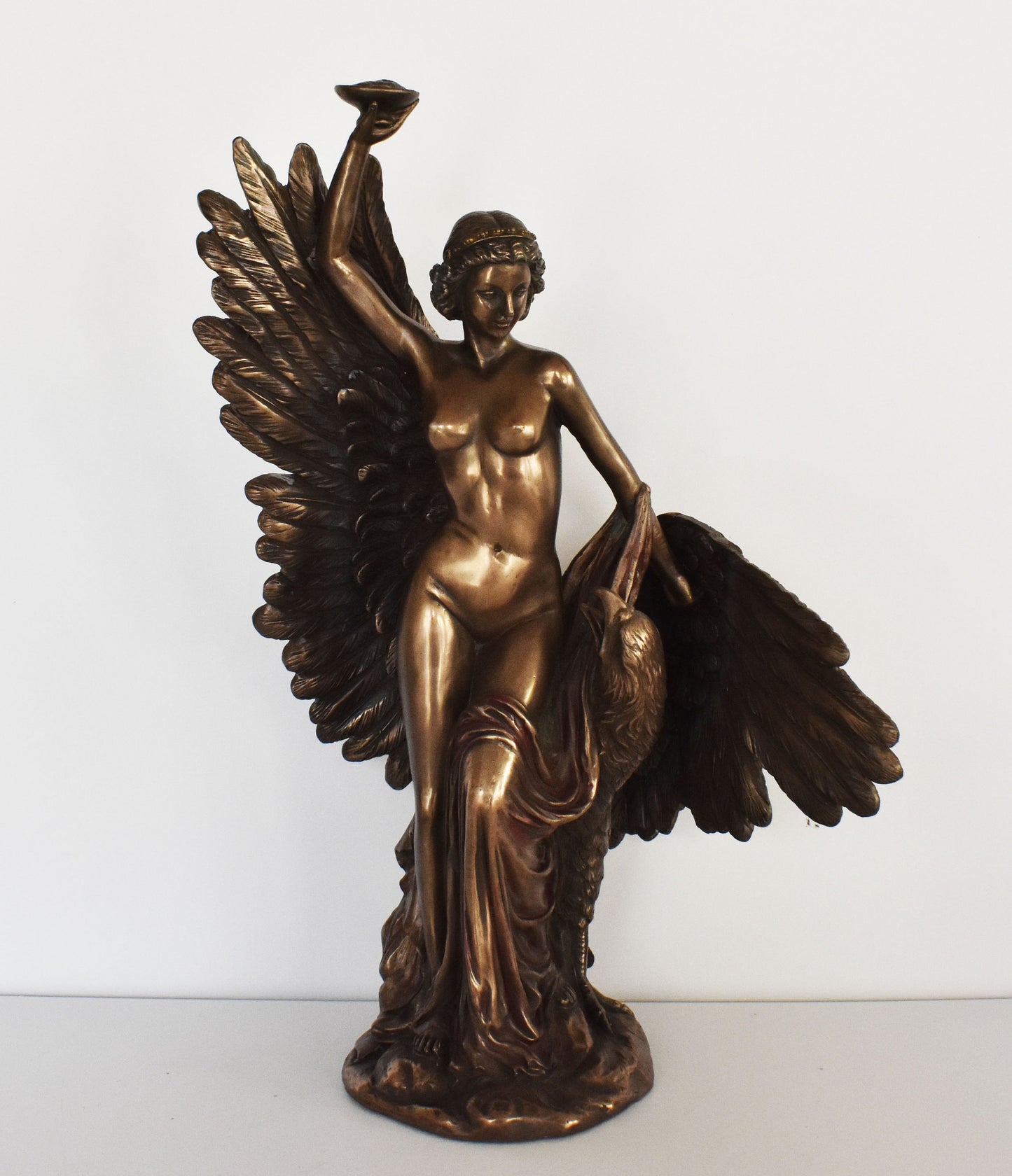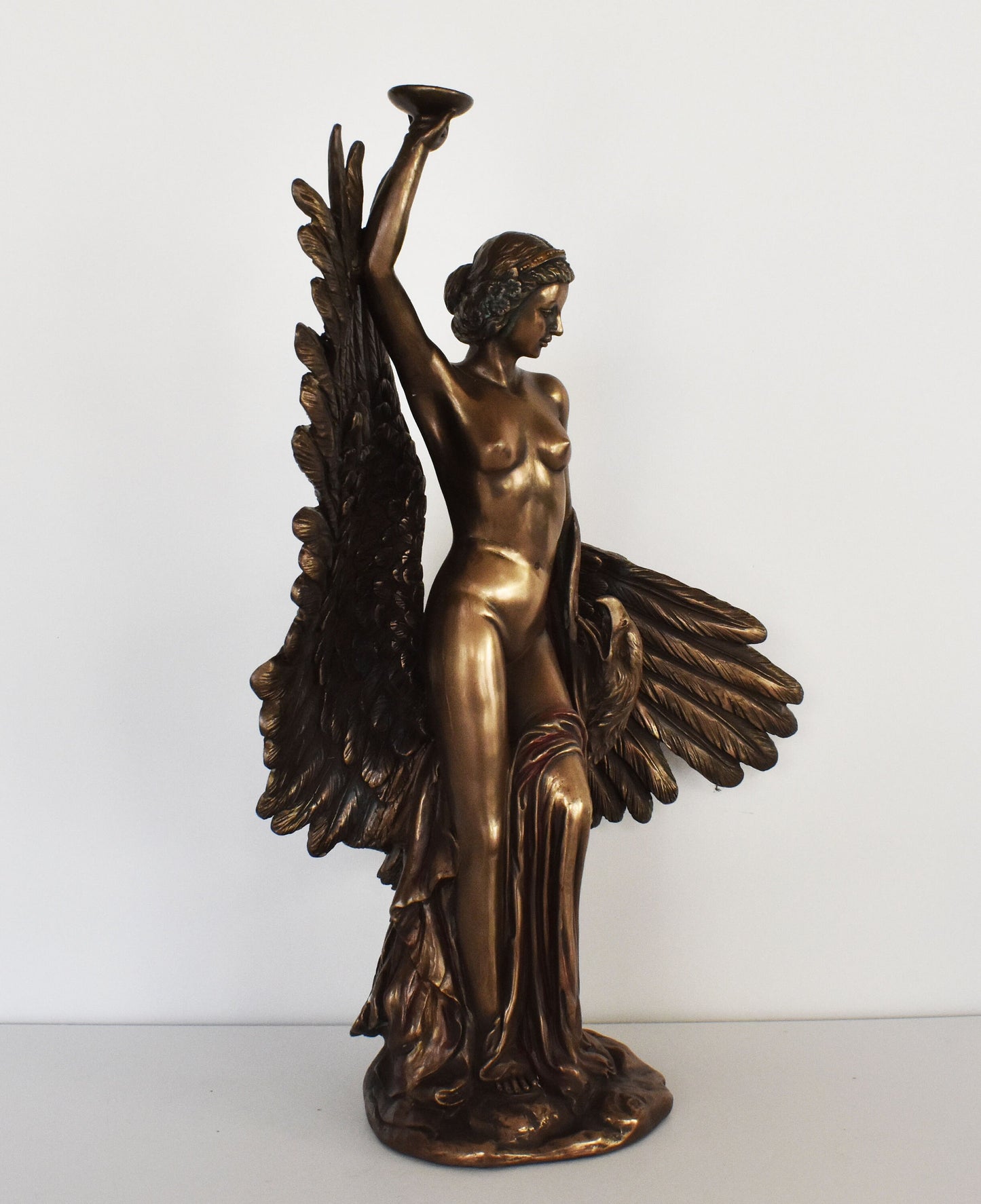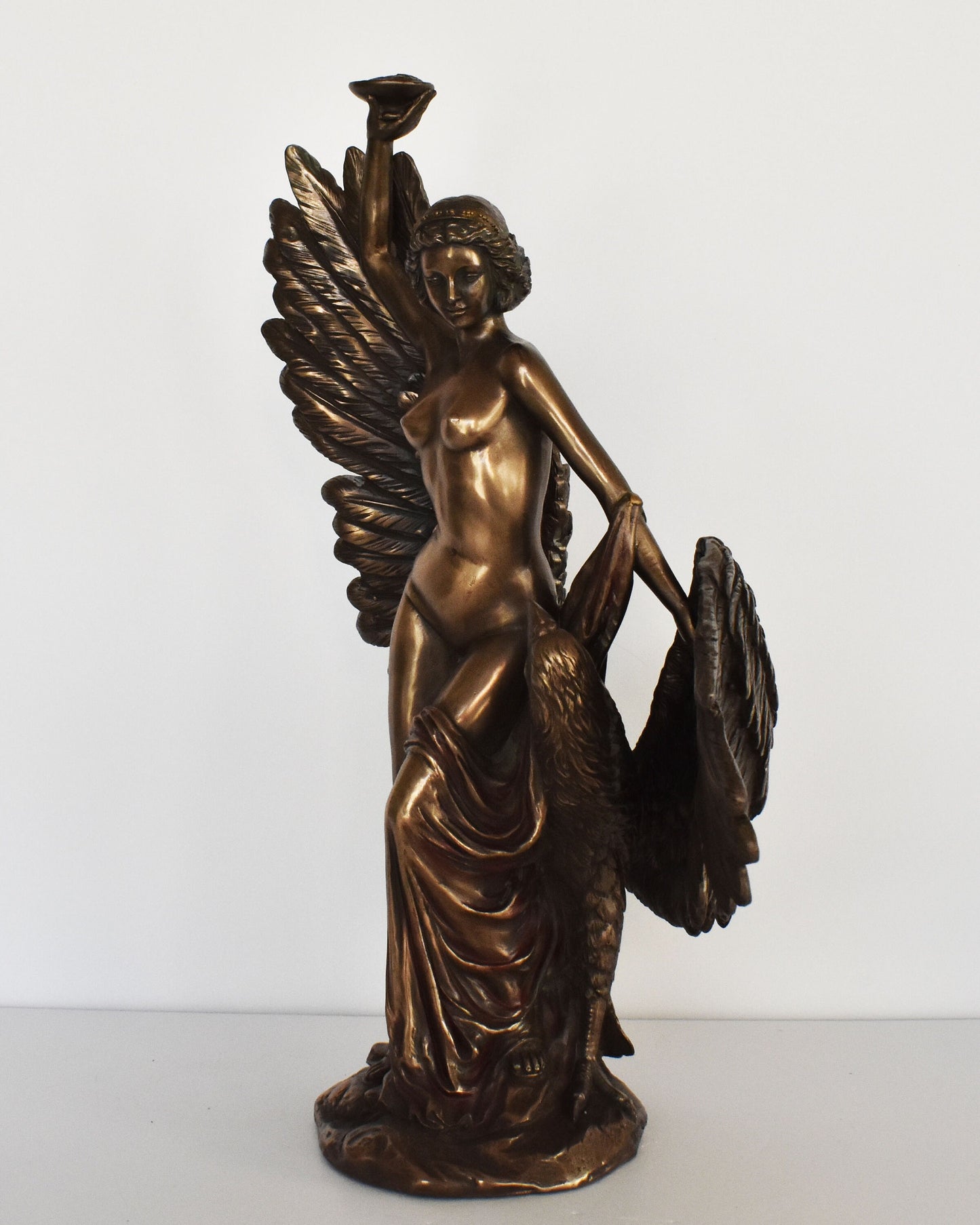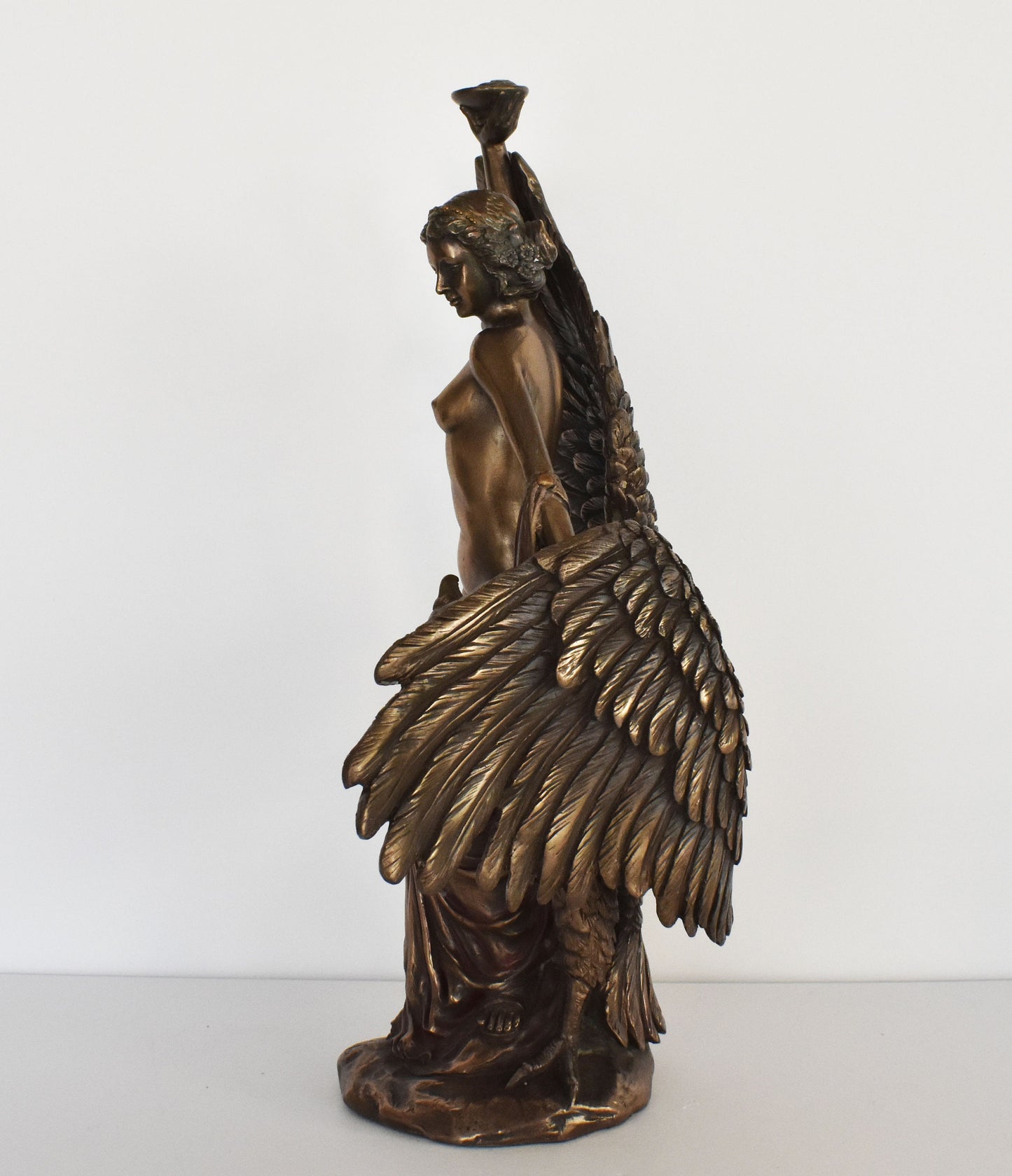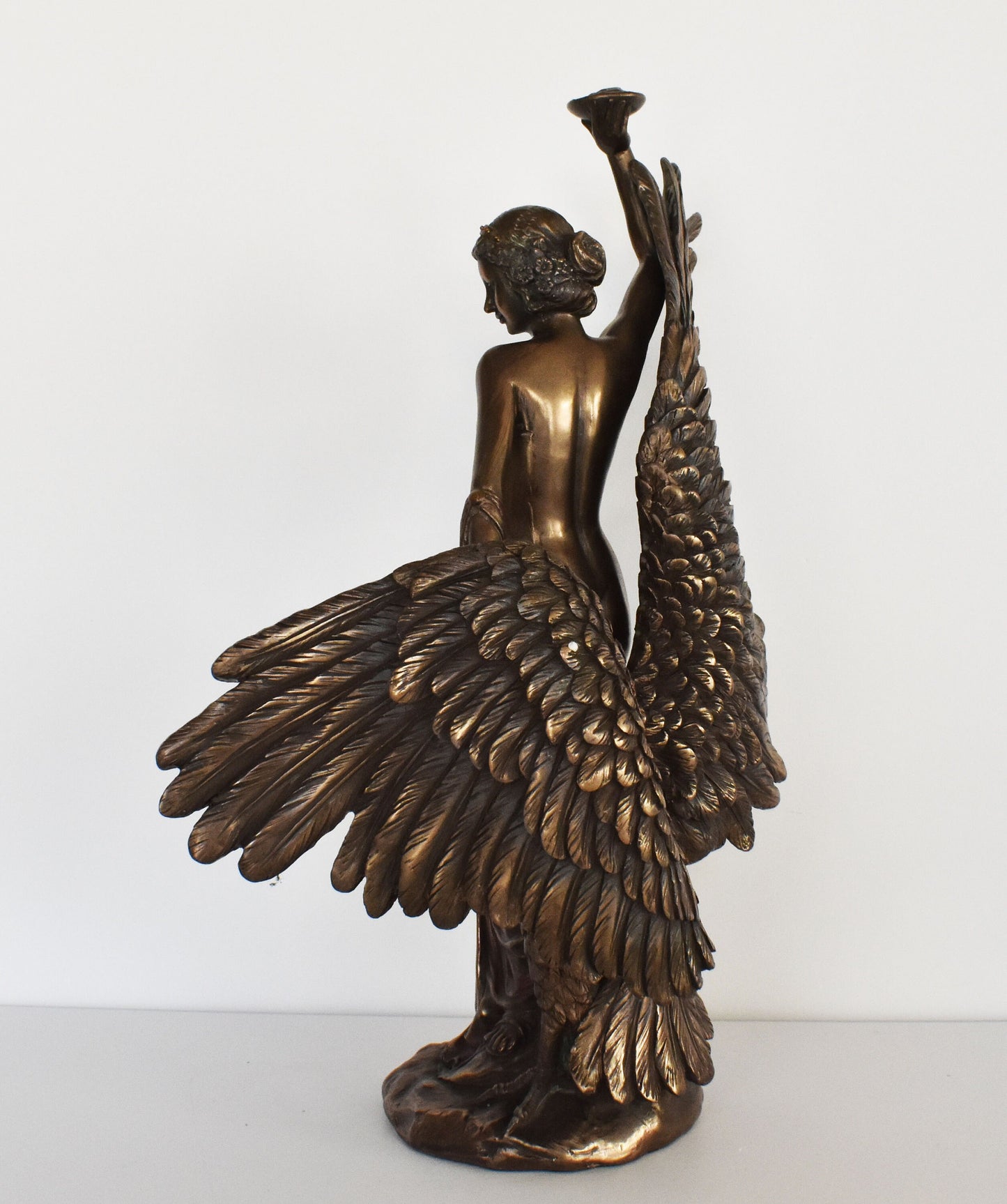Gallery Demeter
Hebe and the Eagle of Zeus - Greek Roman Goddess of Youth or the Prime of Life - Cold Cast Bronze Resin
Hebe and the Eagle of Zeus - Greek Roman Goddess of Youth or the Prime of Life - Cold Cast Bronze Resin
Regular price
€139,90 EUR
Regular price
Sale price
€139,90 EUR
Unit price
per
Tax included.
Shipping calculated at checkout.
Couldn't load pickup availability
Item Specifics
Condition: New
Material: Cold Cast Bronze Resin
Height: 29,5 cm - 11,6 inches
Width: 23 cm - 9,1 inches
Length: 11 cm - 4,3 inches
Weight: 1150 g
This statue is a copy of the famous one Hebe and the Eagle of Jupiter that was made by François Rude c. 1852.Toward the end of his career, François Rude’s native city of Dijon, France, commissioned him to create a marble sculpture. For its subject, Rude chose the Greek goddess of youth, Hebe, whom he depicted as cupbearer to the gods, raising a vessel of the divine beverage ambrosia above her father, Zeus, in the guise of an eagle. Rude made the model for the marble statue in 1852 but did not live to finish the work, which was completed by his nephew. This bronze is a smaller version of the marble, and the existence of many other similar casts indicate the work’s popularity.Hebe, in ancient Greek religion, is the goddess of youth or the prime of life (Roman equivalent: Juventas). She is the beautiful daughter of Zeus and his wife, Hera. Hebe was the cupbearer for the gods and goddesses of Mount Olympus, serving their nectar and ambrosia until she married Heracles (Roman equivalent: Hercules); her successor was the divine hero Ganymede. Another title of hers for this reason is Ganymeda, meaning "Gladdening Princess". Hebe was worshipped as the goddess of forgiveness or mercy at Sicyon.Hebe had influence over eternal youth and the ability to restore youth to mortals, a power that appears exclusive to her, as in Ovid's Metamorphoses, some gods lament their favoured mortals aging. According to Philostratus the Elder, Hebe was the youngest of the gods. She was responsible for keeping them eternally young, and thus was the most revered by them. Her role of ensuring the eternal youth of the other gods is appropriate with her role of serving as cupbearer, as the word ambrosia has been linked to a possible Proto-Indo-European translation related to immortality, undying, and lifeforce. In art, she is typically seen with her father in the guise of an eagle, often offering a cup to him. This depiction is seen in classical engraved gems as well as later art. Eagles were connected with immortality and there was a folklore belief that the eagle (like the phoenix) had the ability to renew itself to a youthful state, making the association with Hebe logical.
